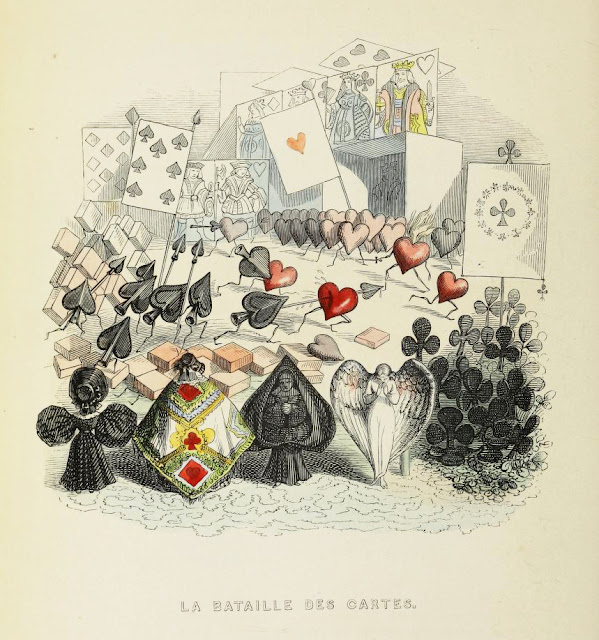With its dreamlike inversions and kaleidoscopic cast of anthropomorphic objects, animals, and plants, the world of French artist J. J. Grandville is at once both delightful and disquieting. Patricia Mainardi explores the unique work of this 19th-century illustrator now recognised as a major precursor and inspiration to the Surrealist movement.
The poet Charles Baudelaire greatly admired the graphic arts, writing several essays about the major caricaturists and illustrators of his day. He found something positive to say about each of them with one exception, the artist Jean-Ignace-Isidore Gérard, known simply as Grandville (1803–1847). And yet, despite Baudelaire’s antipathy, Grandville is arguably the most imaginative graphic artist of the nineteenth century, as well as the most influential on subsequent generations. Baudelaire was well aware of Grandville’s gifts, but his aversion was that of a true classicist:
There are superficial people whom Grandville amuses, but as for me, he frightens me. When I enter into Grandville’s work, I feel a certain discomfort, like in an apartment where disorder is systematically organized, where bizarre cornices rest on the floor, where paintings seem distorted by an optic lens, where objects are deformed by being shoved together at odd angles, where furniture has its feet in the air, and where drawers push in instead of pulling out.
Baudelaire’s comments were perceptive: these are the very characteristics that, while making him uncomfortable, appealed to the next century’s surrealist artists and writers who saw in Grandville a kindred spirit who shared their interest in the uncanny, in the dream state, and in the world of imagination.
Grandville died young, at forty-three, but in his short life his work ranged across the entire spectrum of graphic art, from political caricature to book illustration. His early drawing Let’s Put Out the Light and Rekindle the Fire! for the journal La Silhouette displays the eerie quality many found so disturbing: the censors are drawn with bellows for heads and one large eye, looking very like birds of prey as they go about their grim business of book-burning under cover of darkness. Behind them other censors resembling candle-snuffers in clerical garb join in, all working to extinguish the lumière, the Enlightenment.
read full article at:
















